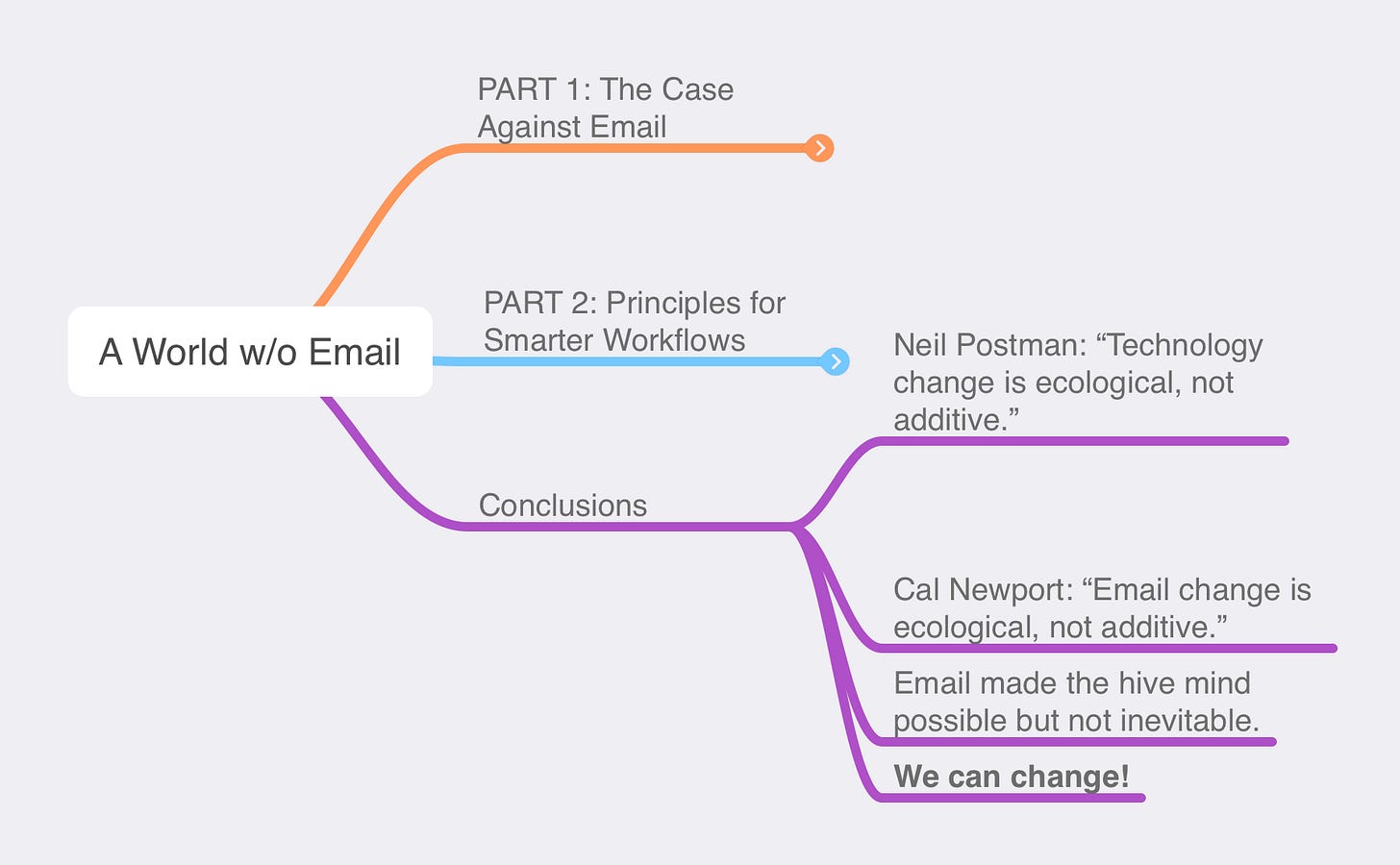A World Without Email: Reimagining Work in an Age of Communication Overload
Author: Cal Newport
Citation: Cal Newport. (2021). A world without email: reimagining work in an age of overload. Penguin Business.
Why this book?
For most, sending, checking, and responding to emails is a time-suck of epic proportions. This book explains how we got here and offers an escape hatch. As we usher in new forms of working and collaborating, practical examples in A World Without Email provide concrete alternatives to the ways many of us work today, which (spoiler alert) could be more efficient.
Key Ideas
Part 1: The Case Against Email
The advent of email organically evolved into the hyperactive hive mind. The hyperactive hive mind makes us miserable and has a mind of its own. It demands context-switching, is an ineffective communication method, and generates a downward spiral of responsiveness that leaves us exhausted and anxious as our in-boxes fill.
Part 2: Principles for Smarter Workflows
👀 The Attention Capital Principle
Increase productivity by creating workflows designed and optimized for the human brain (i.e., focus attention on one thing at a time)🎯 The Process Principle
Smart, thoughtfully designed knowledge and task management processes increase performance and make work less draining (i.e., using task boards to delegate and track collective work).⚙️ The Protocol Principle
Designing rules that optimize coordination (i.e., when and how things happen) creates short-term pain for long-term gain. Allow time for team experimentation and negotiation.📝 The Specialization Principle
Less is more. If knowledge workers spend more focused time on doing fewer tasks they are specially trained in (i.e., writing, teaching, developing, planning, designing, etc.), they produce greater value.
Conclusion
The author concludes by citing a 1998 talk by Neil Postman titled “Five Things We Need to Know About Technology Change” to make an analogy about the wide-sweeping changes wrought by email:
Technological change is not additive; it is ecological.
In other words, email changed everything. From the 1990s through today, email has transformed how and where we work, not just how we communicate. Add Slack, Teams, Discord, and a wide variety of social media apps, and it seems the hyperactive hive mind, anxiety, and fatigue are inevitable— but they’re not. We can change how we do things to learn and adapt. As we experiment with digital transformation in our organizations, we should invest time and attention in reexamining and redesigning our workflows to take advantage of the four principles above and the new tools and automation platforms emerging daily.
I’m all in. I’m living in a world without email.
Rating (out of 4): 🌟 🌟 🌟 🌟







